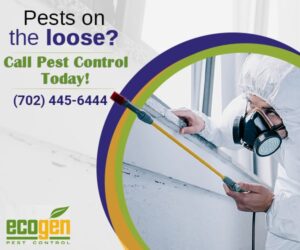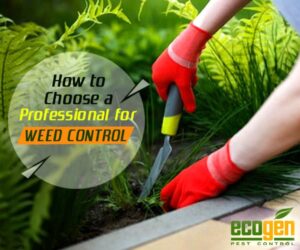Pets are part of the family, and keeping them healthy and safe is a top priority for any household. But when pests invade your space, it often leads to a complicated question: how can you protect your home without putting your furry companions at risk? Many traditional pest control solutions include chemicals or application methods that may be harmful to dogs, cats, and other animals. Fortunately, pet-safe pest control strategies allow homeowners to address pest problems effectively while maintaining a secure environment for their animals.
This article explores how you can strike that balance by understanding the specific threats pests pose to pets, how to choose the right treatment options, and why professional services are often the safest route. With the right knowledge and plan in place, your home can remain pest-free without compromising the well-being of your four-legged family members.

Understanding the Risks Pests Pose to Pets
Just like humans, pets can suffer from the effects of pest infestations. In fact, in some cases, they are even more vulnerable. Pests such as fleas, ticks, ants, and rodents can cause a wide range of issues, from allergic reactions to disease transmission.
Fleas and ticks, for instance, are not only irritating but also carriers of serious diseases like Lyme disease, tapeworms, and flea allergy dermatitis. Rodents bring additional concerns, including the potential for pets to ingest contaminated food or water and exposure to parasites through contact with rodent droppings. Even common household invaders like ants and cockroaches can trigger allergic reactions or respiratory issues in pets who sniff or ingest contaminated materials.
Because pets often roam freely through all areas of the house, including attics, basements, and outdoor zones, they are more likely to encounter pests and the residue left behind after treatment. That makes it critical to adopt an approach that targets unwanted pests while protecting the animals who share the space. Understanding the threat is the first step toward developing an effective and safe plan.
Choosing the Right Pet-Safe Pest Control Solutions
Once a pest problem is identified, it’s essential to treat it with products and methods that do not compromise pet health. Not all pest control materials are created equal, and even natural solutions can be harmful if applied incorrectly. When planning a pet-safe pest control strategy, consider the following:
- Non-toxic materials: Select pesticides that are labeled as safe for pets and avoid substances with long-lasting residues that remain on surfaces pets walk or sleep on.
- Timing and separation: Keep pets out of treated areas for the recommended duration to prevent exposure.
- Enclosed bait stations: When dealing with ants or rodents, use tamper-resistant bait systems to prevent accidental ingestion.
- Natural deterrents: Products containing essential oils like citronella or peppermint may be suitable, but always confirm safety with a professional before applying.
- Ongoing monitoring: Pet-safe approaches often require more frequent inspection to ensure effectiveness over time.
Some homeowners may wonder whether natural approaches can be just as effective. In fact, many low-impact methods can achieve strong results when used properly. For a deeper comparison, this discussion on natural pest control methods explores when and how eco-conscious strategies work best.
Protecting Pets During and After Treatment
Even when using pet-safe pest control products, there are still precautions that should be taken to avoid accidental exposure. Treatment areas, especially those near food bowls, litter boxes, pet beds, or crates, must be clearly identified and cleaned according to the instructions provided by the service technician or product manufacturer.
- Relocate pet items: Before treatment, remove toys, bowls, and bedding from the area to avoid contamination.
- Follow reentry instructions: Observe the specified waiting period before allowing pets back into treated rooms or zones.
- Ventilate treated spaces: Air out rooms after any indoor application to help dissipate any lingering odors or particles.
- Groom pets regularly: Frequent brushing and bathing help remove fleas or ticks before they become a larger issue.
- Inspect outdoor areas: Ensure your yard or garden has no residual bait, traps, or powder that pets could encounter.
Adhering to these steps makes your pest control efforts more effective while reinforcing a pet-friendly household routine.
Common Pests That Require Professional Help
Some infestations are difficult to manage without the assistance of trained experts, especially when pets are involved. Pests like rodents, stinging insects, and bed bugs require targeted solutions that can be too complex or risky for DIY treatment. Certain pests can also return quickly if not dealt with at the source.
- Rodents: These pests pose serious risks to pets by spreading diseases through droppings and nesting materials.
- Ticks and Fleas: These often recur without proper outdoor and indoor treatment coordination.
- Wasps and Bees: Pets may unknowingly provoke nests, leading to stings and allergic reactions.
- Ants and Roaches: Large infestations can affect food supplies and trigger reactions in pets with respiratory sensitivities.
For example, understanding how to manage the difference between pests like fleas vs. ticks is crucial, since each one requires a different treatment timeline and product choice. Professional technicians are trained to diagnose these issues and apply solutions that take pet safety into account from the very start.
Why Professional Pest Control Is the Safer Route
While there are many pet-safe pest control products on the market, the most reliable way to ensure your home remains safe for both humans and pets is to work with trained professionals. Pest control experts can assess the level of infestation, identify pest types, and select treatments that are effective yet mindful of pets’ health.
Professionals are also better equipped to advise on placement and timing, minimizing any exposure risk. They can walk you through pet-specific instructions, schedule follow-up inspections, and make product adjustments based on the unique layout of your home or the habits of your pets. These customizations reduce trial and error and help maintain a balanced, pest-free environment without guesswork.
Partnering With EcoGen Pest Control
Your pets deserve a clean, safe home free from hidden pest dangers. If you’re looking for expert solutions that are both effective and safe for your furry friends, trust the professionals who understand what it takes. Get in touch with our team at EcoGen Pest Control today to schedule a pet-friendly inspection and treatment plan tailored to your home’s specific needs.



